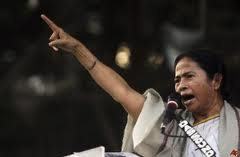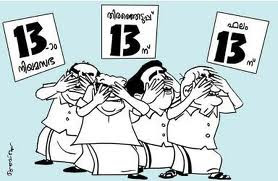Appeared first in 21Fools e-magazine
Mukesh Ambani is indeed worried. For a change it is not about the Reliance industries this time, but about his highly coveted pinnacle of being one of India’s richest persons. He is rumoured to have had a sleepless week and seriously contemplating a sojourn to the backwaters of Kerala to cool himself off. But what is it that is worrying him?
A week ago Mr.P was just another one among the millions of his kind in India but today he is giving some of India’s most powerful people insomniac days and nights. Let us compare and contrast the two people in question to know the real reasons for Ambani’s concerns. Laid back in a lifelong siesta in one of the most beautiful places in the country (surprisingly a communist state!), Mr.P is not unlikely to be the last person you’d associate with wealth given a choice of guess. While Mr.Ambani works hard round the clock to build an enormous business empire flying from one part of the globe to the other, trying to strike the smartest of business deals, spending a lavish portion of his fortune to build his house and what not! Mr.P on the other hand resting near the seacoast of Kanyakumari does not spend a dime and has an entire city named after him (without giving any bribe!) and not just a grand house. But the biggest worry for Ambani is the simple fact that his empire is built up on a bunch of depreciating assets whereas that of Mr. P is well founded on a massive bed of everlasting appreciating assets!
So who is Mr.P?
 He is none other than the chief deity in the 9th century temple of Lord Vishnu in Thiruvananthapuram (mostly referred to as ‘TVM’ or ‘TVPM’ to avoid stress on the typist’s fingers) – Sri Padmanabha. His wealth is a whooping US$22Bn and still counting. In fact with one more vault (last of the six) yet to be opened and inventoried, he is predicted to become the richest person in our country very soon. In fact in the Forbe’s list of ‘World’s Richest Gods 2011’, our man surpasses even the biggest of names in the field by a distinctly convincing margin. His US$22Bn is way too ahead of Vatican’s US$15Bn and Tirupati’s US$11Bn.
He is none other than the chief deity in the 9th century temple of Lord Vishnu in Thiruvananthapuram (mostly referred to as ‘TVM’ or ‘TVPM’ to avoid stress on the typist’s fingers) – Sri Padmanabha. His wealth is a whooping US$22Bn and still counting. In fact with one more vault (last of the six) yet to be opened and inventoried, he is predicted to become the richest person in our country very soon. In fact in the Forbe’s list of ‘World’s Richest Gods 2011’, our man surpasses even the biggest of names in the field by a distinctly convincing margin. His US$22Bn is way too ahead of Vatican’s US$15Bn and Tirupati’s US$11Bn.
But as the universal logic goes- ‘With every case of overnight richness comes countless pairs of greedy eyes and hands’! Several of Mr.P‘s religiously loyal well wishers over the last few decades have now turned up with the 22 Billion Dollar question –Why does God need Gold?
Mr.P has been looked after by a family of kings, who lost their power to the invading British traders who later went on to rule the entire country for centuries. In spite of losing their own base, they continued to support Mr.P and even managed his finance. In fact the treasure that makes Mr.P suddenly rich and famous is nothing but a savings-cum-insurance plan that one of the kings had purchased in the name of Mr.P years ago, and was held back from being recorded in the annals of the family accounts.
The folklore of invading Persians – Mahnud of Ghazni and Muhmad of Ghor were popular even down south in the kingdoms of Travancore, and it could probably be for the need to protect Mr.P from such plunderers that the wise king decided to keep his investment a secret. But today Mr.P is in a much bigger trouble. The plunderers are not coming on horsebacks from distant lands of Persia or China, but simply walking across the street to attack him! This time around it is not an individual’s conquest but that of a legion of money and power hungry, influential people. The very kings who handled smaller fortunes belonging to Mr.P are now being questioned for staking claim to Mr.P’s newfound treasure. Talking in the Panchatantra style, ‘Of course there is wisdom in the saying- With fortunes come plunderers!’
But let me look at it this way. On one side we have our very own elected mob that creates a pandemonium in our sacred sanctum of democracy, misappropriates the tax payer’s money, abuses national treasures to build their own and produces (and reproduces) scams after scams. Also taking into consideration the fact that our country that is today in shambles of poverty and corruption, was prosperous and happy during its pre-colonial period of regional monarchy to the point of being called a ‘golden bird’; why not give it another shot?
Bring back the royals and let them take over from these scamsters. And this time, I don’t mind being ‘A Raja’!






